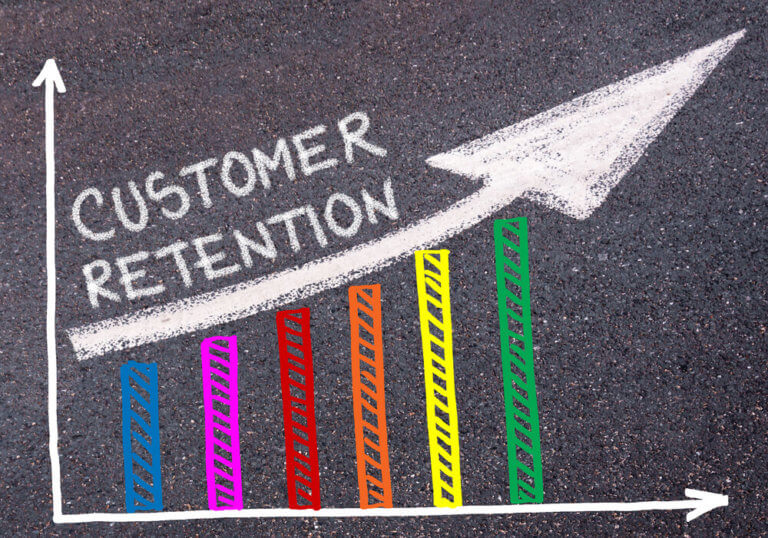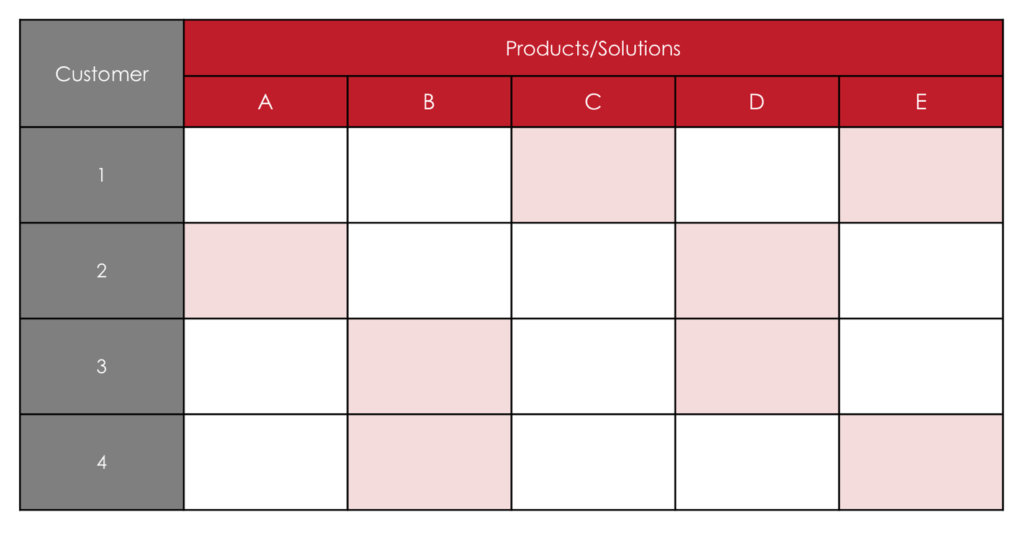There are four ways for a company to grow: add more customers, sell more to the ones you have, sell more often to the ones you have or keep the ones you have from leaving (How to Grow your Business: 4 questions you should ask). Selling more to your existing customer can be in the form of upselling – persuading your existing customers to purchase a more expensive, premium version of their chosen item OR cross selling – selling them an additional product or service. In this week’s blog I’m going to share with you one simple solution to help you increase your cross selling.
I have no doubt you’ve heard the saying ‘do you want fries with that?’ and I bet I don’t even need to name the company the saying is synonymous with. That right there, at its most simplest form, is how you add an additional product to a pre existing purchase and in doing so, sell 9 million pounds of fries every day globally.
Why is cross selling important
In a nutshell, cross selling expands the product range an existing customer purchases. So not only does it bring in new revenue from the additional product sales, it also deepens their attachment to your business, translating to better retention and increased customer loyalty.

Sounds straight forward enough and common business sense to implement, right?
Wrong…and here’s why.
1 in 3 customers do not buy additional products and services from you simply because they do not know you offer them.
Are you and your business unknowingly part of this statistic?
Some say the problem is even worse, possibly more like two in three.
Of course it may be different if you only have one product or service to offer. To put this in to context, one well-known media company I worked with had just four products and services, and their penetration rate of all four products was just 0.13%.
When we profiled their customer base we discovered that only 10% were prime for all four products and services, giving a penetration rate of 1.27%, whilst still low it was significantly better than the current 0.13%. And clearly this rate improved as we looked at cross selling only three, two or a single additional products against their current single product purchase.
The cross selling challenge
Here’s a simple exercise I’d like you to.

Write down on a piece of paper, in five seconds, a number which equates to the total number of products & services your customers can buy from you. Write down the figure which immediately comes to mind.
Ask your senior leaders, or your sales team or your co-workers to complete the same exercise.
In all the years of sharing this exercise (and I’m talking over two decades), I’ve yet to find an organisation where everyone who completed the exercise could articulate by a single number their total offering.
I’ve been involved in conversations which have included comments such as..
‘How do we actually categorise them between product or service?’
‘I’m not sure that’s a product we try to cross sell’
‘I didn’t know we offered that’
Let me be clear, if your people cannot quantify the precise number of products and services your business offers, how do you expect your customers to do so?

Most of your existing customers do not buy ALL of the products and services that they could from you simply because they do not know you sell them.
Could this be the case in your business?
Have you or your people…
- come away from a customer meeting and thought, “I should have asked about …”?
- had a customer tell you they’ve bought a product or service from someone else which they could have bought from you?
- had a customer say ‘I didn’t know you offered that…’
If you answered yes to any of these, then you are missing cross selling opportunities at this very moment.
The one simple solution to increase your cross selling
There is a simple solution to guarantee you and your team consistently educate your customers on the full range of products and services they can buy from you, and I call it the ‘Proposition Matrix’. It is so simple to put into practice and yet few companies or individuals have realised the power of the information already available to them from their own records.
This is how it works:
Imagine a grid, a chess board – just like the one below…

List all your customers on the vertical axis and all your products and services on the horizonal axis. Then colour in the meeting square where your customer currently buys your product or service.
The squares that remain uncoloured are your squares of opportunity, and through an ongoing process of educating and engaging your customers on those open spaces you can start to maximise and unlock their buying potential.
This education and engagement can be done through face-to-face contact, email marketing, direct mail, telesales or any number of other media. The key point is that the education and engagement never stops.
Additional benefits of cross selling
It is fascinating when you start to measure the cross selling (penetration rates) of your products and services, and particularly if you measure by sales person. All sales people have favourite products. The proposition matrix is a great way of identifying skills gaps in knowledge and ability and understanding which of your salespeople are best at cross selling which products and services.
One business I coached grew their revenue from £3m to over £12m in just two years by understanding its business better and using the proposition matrix, implemented a targeted cross selling (maximisation) strategy for its entire customer base.
6 actions you can implement today to increase your cross selling
- Create your proposition matrix template either in excel or linked to your CRM system (whichever is easier to use and update)
- List your existing customers and prioritise them on your matrix (vertical column)
- List your products and services available for cross selling (horizontal column)
- Identify which customers have bought which products and services in order to identify your gaps, your windows of opportunity.
- Create your customer education and engagement plan to target the gaps (outbound calls, email, face to face meeting)
- Make contact!!
Remember, most of your existing customers do not buy ALL of the products and services that they could from you simply because they do not know you sell them. Don’t fall into this trap, start educating them today!

